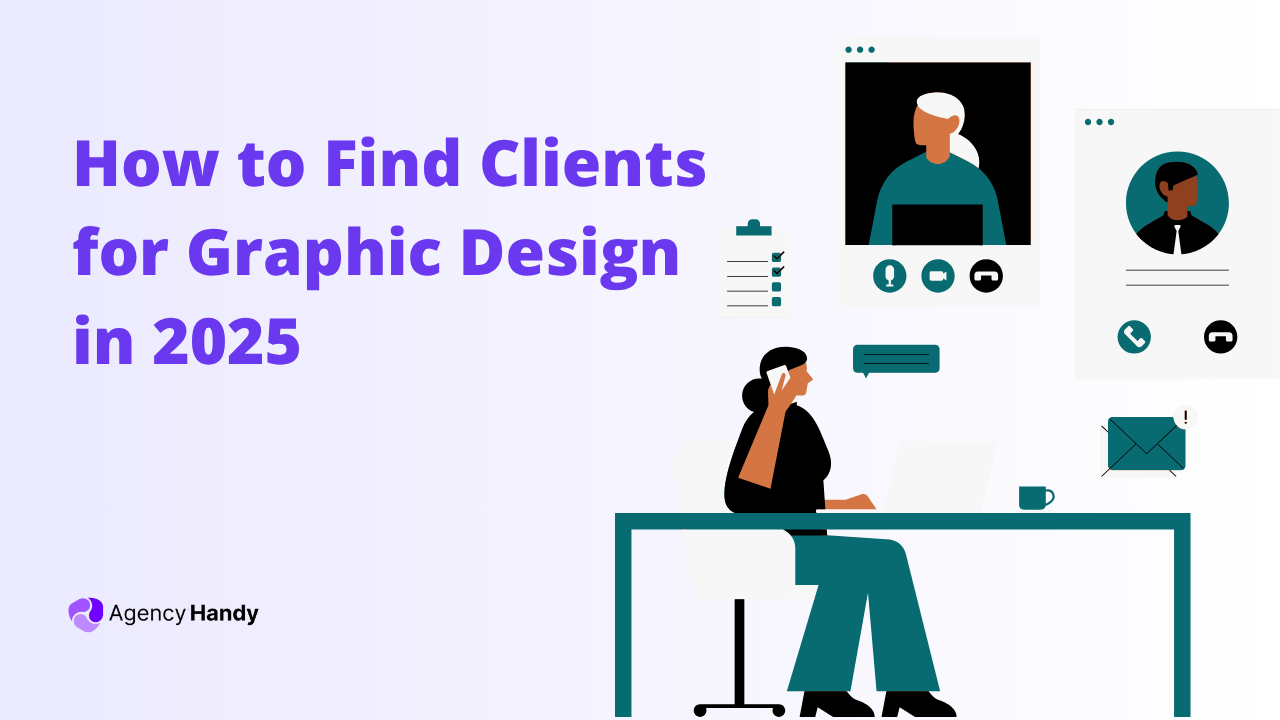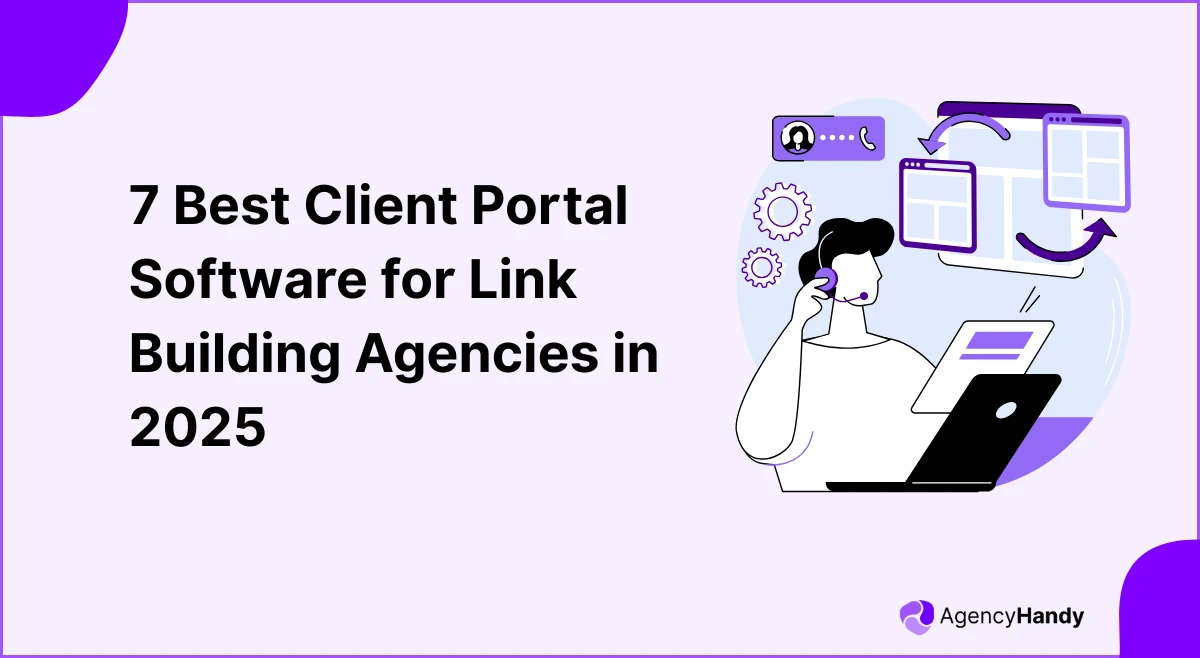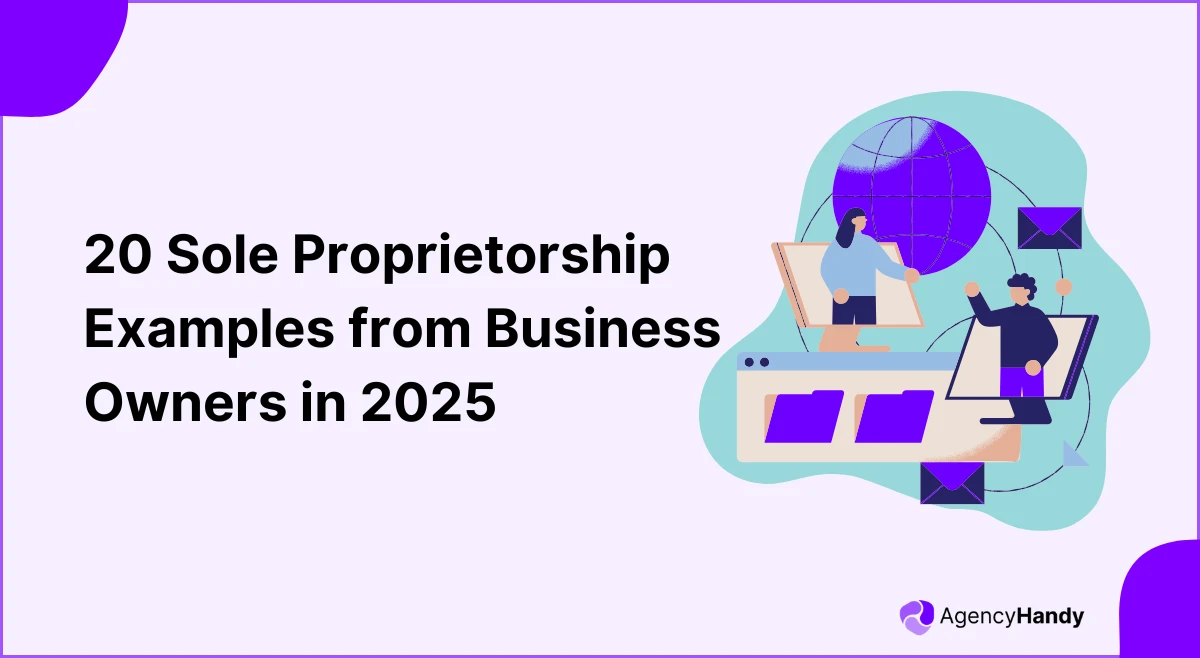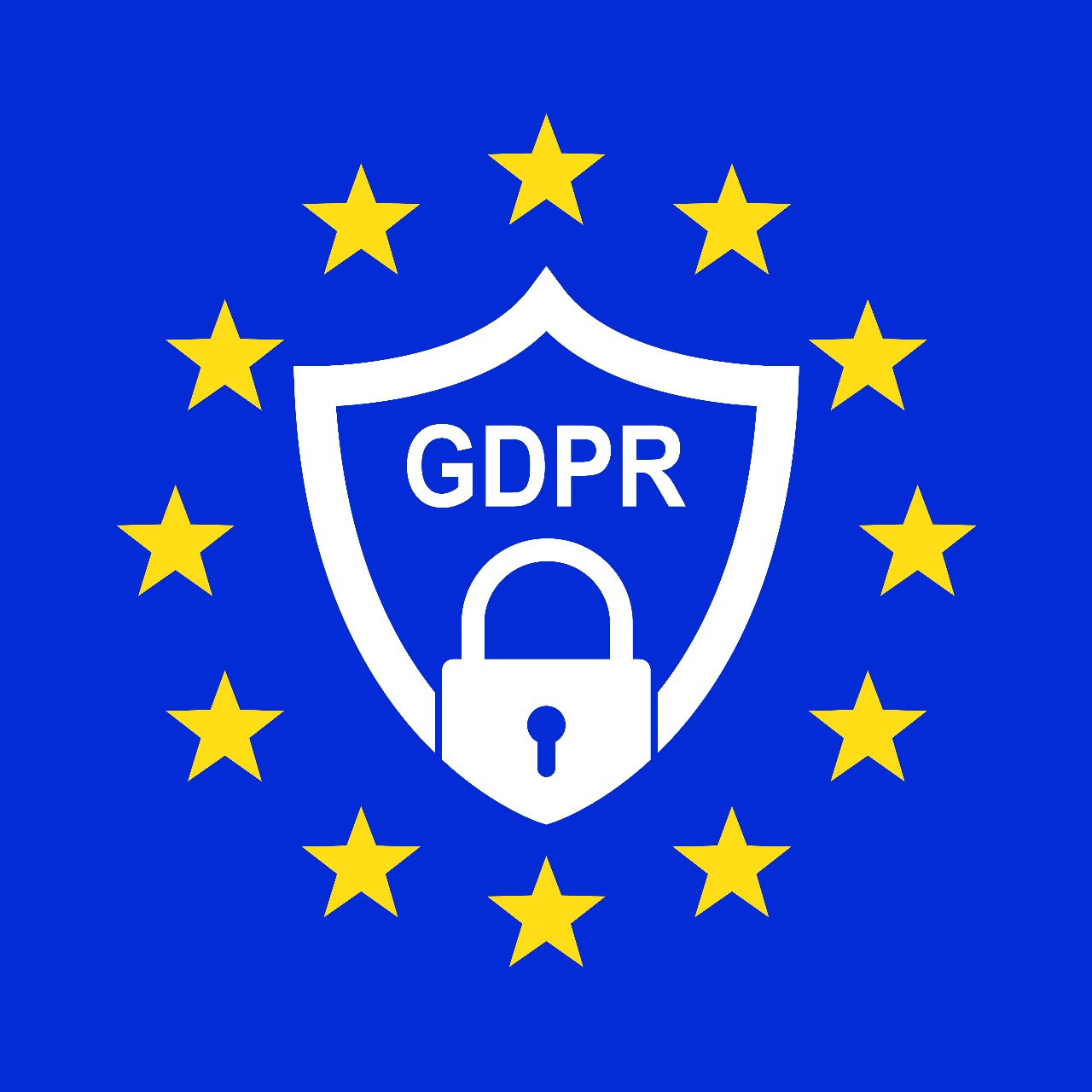You aren’t getting clients for design work, and that’s totally normal. Freelancers go through this. It’s probably you haven’t discovered the right resource or you’re stuck with a few.
What are busy designers doing to find clients for graphic design?
- They’re mailing postcards. Yeah, physical mail. To actual businesses. It’s old school and nobody else is doing it, so you actually get noticed.
- They aren’t competing on Fiverr with thousands of others. They spend time on subreddits and LinkedIn, approaching prospects where there’s way less noise.
There’s more that these busy freelancers are doing to onboard clients, which you’ll learn from this article.
How to Get Graphic Design Clients: Top 7 Ways
This is the ultimate playbook to get clients for graphic design projects. You might not see results in a few weeks. But if you tap on all 7 options, the compound effects will get you more clients than you might hire a designer intern.
1. Start by Choosing Your Niche (Or Stay Invisible)
When we recently needed a graphic designer for our SaaS company, I didn’t Google “graphic designer near me.”
I searched for “SaaS graphic designer” and “designer for blog visuals SaaS.”
Why?
Because we needed someone who understood our industry and knew what a feature comparison table should look like and what design aesthetics resonate with our audiences.
The designers with generic portfolios showing “a bit of everything”? We scrolled right past them. The ones who specialized in SaaS? They got our attention in seconds.
This is exactly why the “I design for everyone” approach is killing your client pipeline.
Pick Your Lane Based on Where You Are
Not all niches are equal. Some need years of experience; others, you can start tomorrow.
| Experience Level | Target Clients | Design Niches |
| Just Starting Out (0-1 year) | Small businesses, coaches, local companies | Social media graphics, Email newsletter templates, and presentation design |
| Got 1-2 Years | Clients with real budgets | Web design for online businesses, Logo and brand identity design, Course creator graphics (slides, thumbnails, funnels) |
| Ready to Specialize (2+ years) | Premium clients, consistent projects | SaaS and tech companies, Healthcare organizations (fastest-growing), Product packaging design |
The Search Engine Advantage
When you specialize, you show up higher in searches like “restaurant menu designer” or “SaaS blog graphics.”
This means better clients find you easier, and they’re willing to pay more because you clearly understand their world.
Your competitors try to be everything. You focus on one thing and win.
2. Build a Portfolio That Proves You Understand Their Business
When we were hiring that SaaS designer, here’s what actually happened: we’d find someone through a job post or LinkedIn search, then immediately check the candidate’s –
- Personal website
- Behance
- LinkedIn profile
- YouTube channel, if they had one
We weren’t just looking at pretty designs. We were looking for proof they understood the SaaS space.
What Actually Got Our Attention
Out of 60+ applicants, only 5 made it past our first screening. Most portfolios showed gorgeous logos and good social media designs, but were irrelevant.
The designers who stood out showed:
- Blog header images with clear hierarchy
- Feature comparison graphics and dashboard UI
- Social media templates for B2B content
- The problem they solved, their approach, and actual results
Stating “Increased email click-through by 34%” is way more impressive than just “Made a newsletter template” because it shows business impact, not just design skills.
Where You Need to Be Visible
Your own website – Non-negotiable. Even a simple one-pager works if it showcases niche-specific work.
Better if you could create a service catalog. Agency Handy comes with a service catalog feature, where you can showcase all your design services. But if you already have a Behance portfolio, it’d be enough.
Behance or Dribbble – We checked these for depth and creative range.
LinkedIn – Our credibility check. Complete profile + client recommendations = instant trust.
YouTube – One designer had YouTube videos showing their design process. Some designers worry this “gives away their designing secrets,” but we saw it differently—it proved they knew their stuff. We wanted to hire them even more.
Here’s the math: If 20,000 people watch your design process and just 0.10% reach out, that’s 20 potential clients who already see you as an expert. They’re pre-sold before the first conversation.
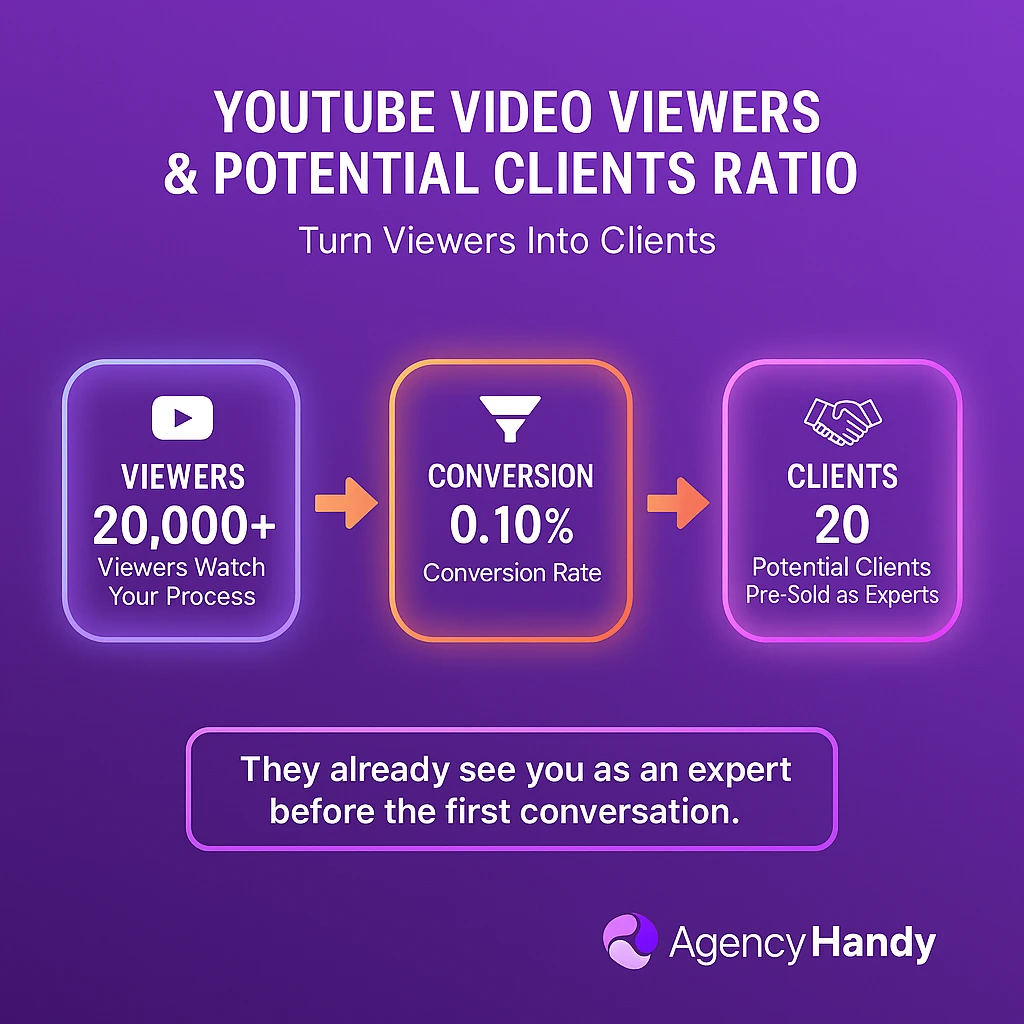
Optimize for Your Niche
Target searches like “fitness brand designer” or “tech startup designer” instead of generic “graphic designer portfolio.” When someone in the diet, SaaS, healthcare, or e-commerce space finds a portfolio full of their industry work, you’ve already won.
Your portfolio isn’t a gallery—it’s proof you understand their industry.
3. Go Where Your Ideal Clients Actually Spend Time
Here’s what most designers get wrong: they create a Fiverr profile, wait for orders, and wonder why they’re only getting $20 logo requests from clients who want “500 revisions included.”
Let me be direct about marketplaces like Fiverr and Upwork: New profiles on marketplaces start at the bottom. You need months of low-paying gigs to build enough reviews before clients take you seriously. The algorithm favors established sellers, so you’re stuck in the low-budget trap while building reviews.
Does it mean to avoid them completely? No.
A solid marketplace profile is a nice plus—just not your primary client source. The real opportunities? They’re happening in places where your ideal clients already hang out.
3.1 LinkedIn (where we actually found our designer)
When we needed the designer, we didn’t post on Upwork. We asked in a LinkedIn group of SaaS founders. Within hours, three designers reached out—all with relevant experience, decent rates, and professional portfolios.
Here’s what works on LinkedIn:
- Share carousel posts showing your design process
- Connect with founders, marketers, and agency owners in your niche
- Comment thoughtfully on posts from potential clients
- Join industry-specific groups (SaaS, fitness, e-commerce, etc.)
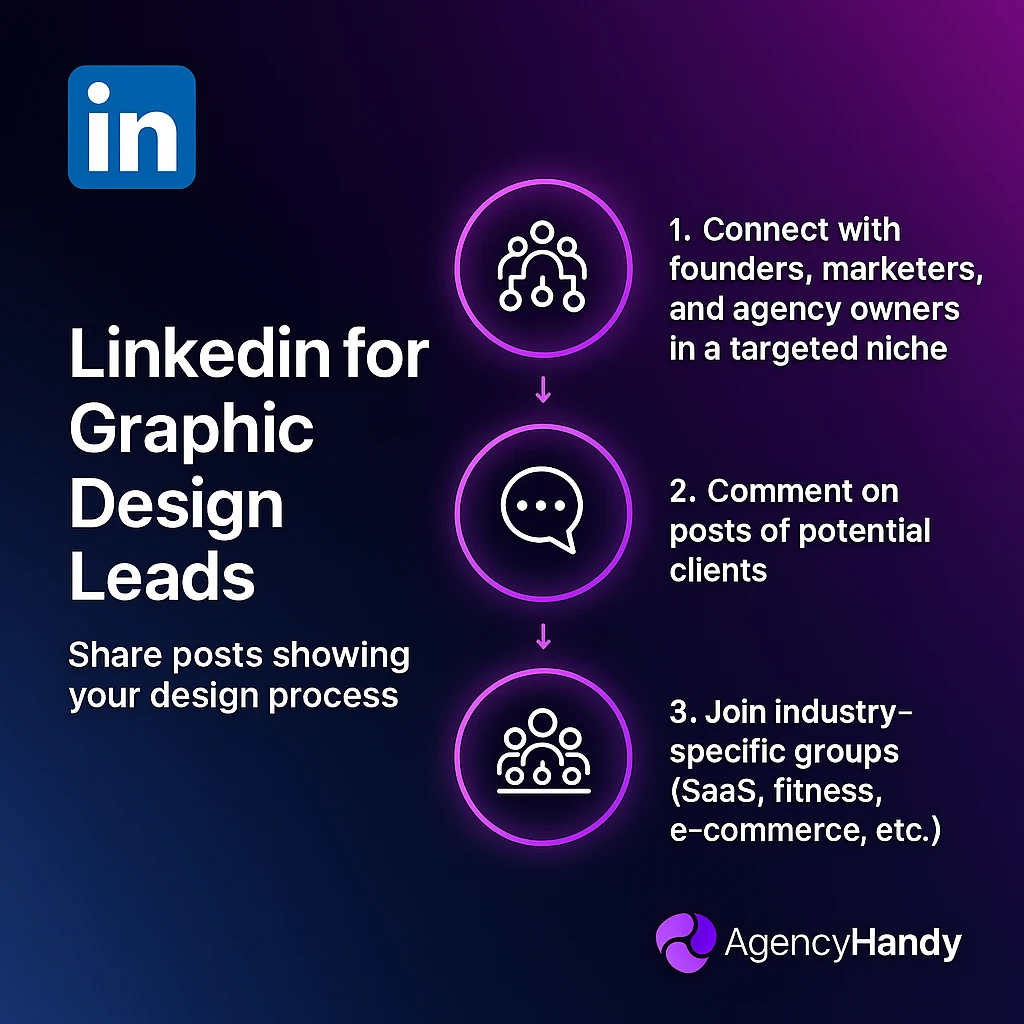
3.2 Reddit & Online Communities
Founders and CEOs are on Reddit, Facebook groups, and niche forums. They often post looking for graphic designers.
Spend time in places like:
- r/Entrepreneur, r/startups, r/SaaS, r/design (or whatever matches your niche)
- Facebook groups for small business owners
- Slack communities for your target industry
The key: don’t pitch. Answer questions, share insights, and be genuinely helpful. When someone needs designs, they’ll remember the person who helped them—not the one who spammed “DM me for design services.”
3.3 Local Networks: The Referral Goldmine
Don’t underestimate your local scene. Reach out to web development agencies, marketing firms, and creative studios in your area. They often need designers for overflow work or white-label projects—and they pay fairly.
Try to attend local meetups and networking events. One conversation can lead to three referrals. When people meet you in person and know what you do, you’re the first name they mention when someone asks, “Know any good designers?”
Local networks create a referral chain that online-only designers never tap into.
4. Master Cold Outreach (Not Spam)
Let’s talk about why 99% of cold outreach messages get deleted instantly.
“Hi, I’m a graphic designer with 5 years of experience. I can help with logos, branding, social media, and more. Let me know if you’re interested!”
Generic. Forgettable. Deleted.
Whether you’re trying to get graphic design clients on LinkedIn, Instagram, or through direct email, the same rule applies: show you’ve done your homework.
What Actually Works: Prove You Understand Their Business
When finding graphic design clients online, most freelancers focus on blasting messages everywhere. Wrong approach.
Your outreach needs to prove one thing: you understand their business and how you can help them.
Here’s the structure that gets responses:
- Mention something specific about their brand: Not “I love your work” but “I noticed your Instagram posts use three different font styles—it’s diluting your brand consistency.”
- Identify the gap or problem: “Your blog content is solid, but the header images don’t match the professional tone of your writing. It’s probably costing you credibility.”
- Clearly state what you’ll solve: “I specialize in creating cohesive visual systems for SaaS companies—blog graphics, social templates, and email headers that all speak the same visual language.”
- Make it easy to say yes: “Would you be open to a quick 15-minute call this week?”
Tools and Follow-Up Rules
As a freelance graphic designer, you can use tools to scale your outreach. Use tools like Saleshandy or Apollo to manage campaigns. But personalization still matters.
Follow-up once, twice, or thrice max—not ten times. If someone doesn’t respond after two attempts, move on.
Personalized Approach – The Secret
Whether you’re looking for clients on LinkedIn, Reddit communities, or cold email, the principle stays the same.
Send 10 highly researched, personalized messages instead of 100 generic ones. Prove you’ve looked at their brand, understand the gaps, and know exactly how to fix them.
If you’re able to get some eligible leads, you should send them a proper proposal including services they will need mentioning all details and deliverables.
You can pick demo proposals from Google, or if you’re doing it for an agency, Agency Handy proposals will make things easier.
Quality beats quantity every time.
5. Use Old-School Tactics: Direct Mail & Referrals
While everyone’s scrambling to get graphic design clients on Instagram and LinkedIn, let me tell you about two methods most designers completely ignore—and that’s exactly why they work.
Physical Postcards (Yeah, I’m Serious)
I know what you’re thinking: “Postcards? In 2025?” Hear me out.
Send a well-designed postcard to creative directors or agency owners. They’re getting 50 cold emails a day, but how many physical postcards from designers? Maybe once every few months—if that.
Here’s what you do:
- Show off 2-3 of your best works (make them big and impressive)
- Add your website and contact info
- Write a short note by hand (yes, actually handwrite it)
- Follow up with a call in 1-2 weeks, then send an email
It will cost you around $130 for 100 postcards with postage. Land one decent client, and you’ve already made your money back 10x over.
The magic is in the sequence: they see your postcard → you call → you email. Multiple touchpoints stick in their memory.
Referrals
Freelance graphic designers get clients easily through referrals. When someone tells their friend, “You need to hire this designer,” you’re not competing with anyone, you’ve already got the gig.
But here’s the thing most designers mess up, they never actually ask.
After wrapping up a project, just say: “Hey, if you’re happy with how this turned out, I’d really appreciate it if you could refer me to anyone else who might need design work.”
That’s it. Simple ask. Massive results.
6. Create Content That Brings Clients to You
Here’s the shift you need to make: don’t chase clients and start attracting them. The easiest way? Create content that shows you know your stuff.
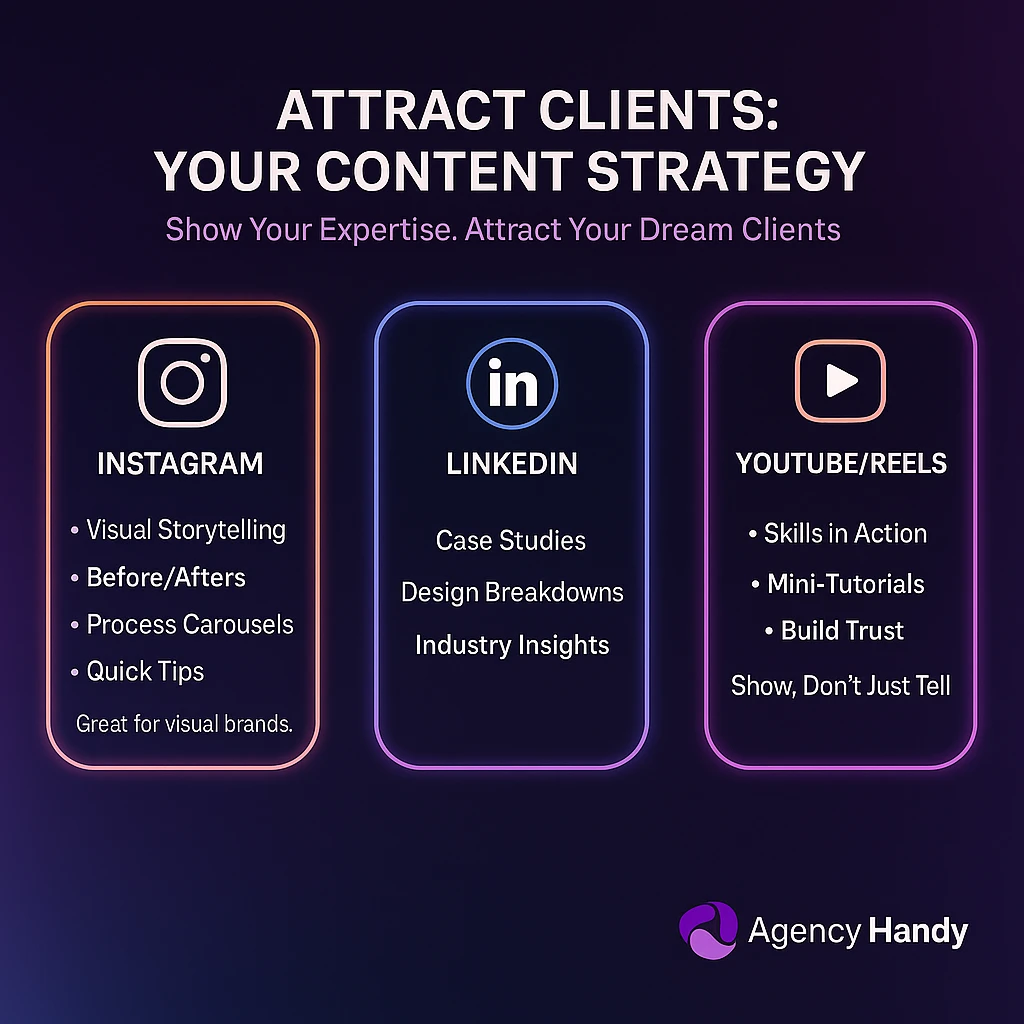
What to Share (and Where)
You don’t need to be everywhere. Pick 1-2 platforms where your ideal clients hang out and be consistent there.
- Instagram: Before/after design transformations, carousel posts breaking down your process, and quick design tips. Great for getting graphic design clients on Instagram who value visual storytelling.
- LinkedIn: Case studies showing real business results (“Redesigned their email templates, open rates jumped 40%”), design breakdowns, and industry insights. This is where B2B clients and agencies are actively looking.
- YouTube Shorts/Reels: 30-second process videos showing how you work. People see your skills in action and instantly trust you more.
The Rule: Educate, Don’t Sell
Don’t post “Need a logo? DM me!”
Instead, share: “Here’s how your brand logo can stand out for the audience” Then show examples.
When you consistently drop valuable content, two things happen:
- You rank higher when people search for niche-specific design help
- Potential clients see you as the expert before you even talk to them
The Long Game Pays Off
Content works while you sleep.
That case study you posted 6 months ago? Still bringing in inquiries. That design tip video? Still getting shared.
You’re not just looking for clients for a graphic design business—you’re building a system where they come to find you.
7. Partner With People Who Already Have Your Clients
Look, I get it. When you’re struggling to land clients, seeing other designers succeed can sting a little. But here’s something that changed the game for me: those same people can become your biggest allies.
Who to Partner With
- Web developers: They’re constantly building websites for clients who need logos, graphics, and visual content—but they don’t design. That’s where you come in.
- Copywriters: They craft the message; you make it look incredible. Together, you’re offering clients a complete package.
- Marketing agencies: When they’re drowning in projects, they need reliable designers for overflow work. You handle the design, they manage the client. It’s a win-win.
- Other designers: Yeah, even other designers. Someone who focuses on branding might get requests for web design and need to refer them out. Why not to you?
How to Actually Start
Find these people on LinkedIn or Reddit discussions. These are the same spaces where you’re looking for clients? They’re looking for reliable partners.
Start with one small project. Show up, deliver great work on time, and don’t be a headache to work with. That’s honestly the bar—and you’d be surprised how many designers don’t clear it.
Once they trust you, the referrals keep coming.
Why Bundles Work
Most clients looking for a freelance graphic designer love one-stop solutions.
When you partner up, you can offer “Complete brand package: logo + website + marketing materials” instead of just one piece.
Clients don’t want to manage five different freelancers for five solutions. Make their life easier.
5 Mistakes That Keep Designers Broke and Unknown
Look, if you’re putting in the work but still struggling to get clients for your graphic design business, it’s probably not because you’re not talented enough. More often, it’s because of a few strategic mistakes that are easy to fix once you spot them.
1. Trying to Design Everything for Everyone
I know the temptation. When you’re starting out, saying “yes” to everything feels safer than niching down.
But here’s what actually happens: clients can’t figure out what you’re actually good at, so they move on to someone more focused.
Specializing feels risky, but it’s what makes you memorable.
2. Racing to the Bottom on Price
Charging $50 for a logo because you need the work? I get it.
But those clients who only care about price will drain your energy with endless revisions and zero respect for your time.
You’re worth more than that. Price yourself accordingly.
3. Relying on Just One Client Source
If Upwork crashes tomorrow or Instagram changes its algorithm, what happens to your business? Putting everything into one platform is like walking a tightrope without a net.
Use 2-3 different methods to find clients for graphic design—spread the risk.
The best thing to do would be to build your personal brand. Spend at least 1 hour on personal branding and business development. Within 6 months, you will be extremely busy designing projects.
4. Not Asking for Testimonials or Referrals
You finish a project. The client’s thrilled. You’re relieved. And then you just… move on.
Here’s the thing: happy clients want to help you—but you have to ask.
A simple “Would you mind writing a quick testimonial?” or “Know anyone else who might need design help?” opens doors.
5. Inconsistent Showing Up
You update your Behance portfolio, post on Instagram, feel good about it… then disappear for three months.
Clients don’t hire ghosts. Consistency matters more than perfection. Even showing up once a week builds more momentum than one perfect post followed by silence.
But,
None of these mistakes means you’re not cut out for this. They just mean you’re human and learning. Pick one mistake from this list, fix it this week, and watch what changes.
Your 60-Day Action Plan to Get Your First 3 Clients
Alright, enough theory. Let’s get tactical. Here’s exactly what to do over the next 60 days if you’re starting from scratch or need to rebuild your client pipeline.
Your Week-by-Week Breakdown
| Timeline | What to Do | Goal |
| Week 1-2 | Define your niche, update portfolio on your website and Behance graphic designers profile, optimize LinkedIn with niche-specific keywords | Get your foundation solid |
| Week 3-4 | Join 5 communities (LinkedIn groups, Reddit channels, Facebook groups), start commenting and helping—no pitching yet | Build visibility and relationships |
| Week 5-6 | Send 30 personalized outreach messages (LinkedIn, email), post your work 3x/week on Instagram or LinkedIn | Start active outreach |
| Week 7-8 | Follow up with everyone from Week 5-6, ask your network for referrals, attend 1 local networking event or online webinar | Close the loop and expand reach |
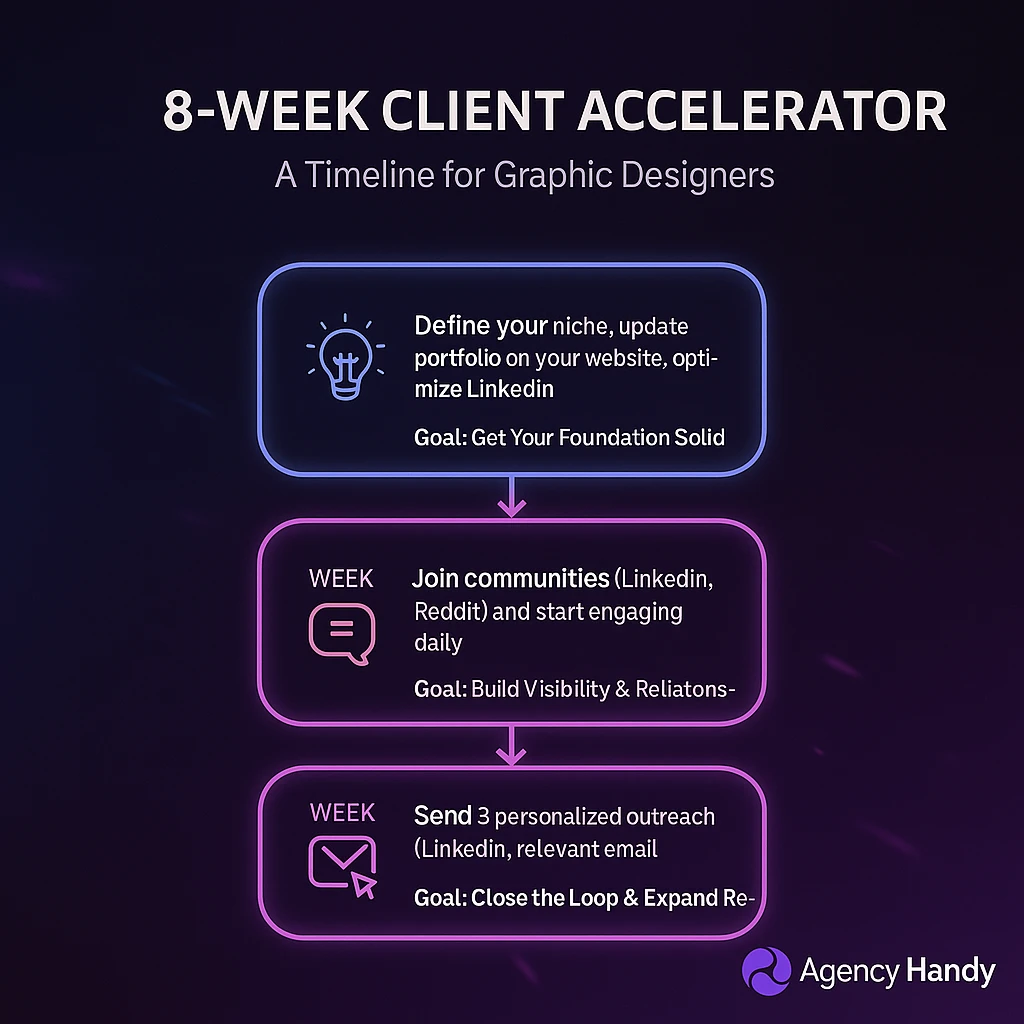
What to Realistically Expect
- After Week 4: You’ll start getting noticed. People will recognize your name in communities. Maybe a few profile views, some likes, but probably no clients yet. That’s normal.
- After Week 6: You should get your first real conversations. Maybe 2-4 people respond to your outreach. One might turn into a discovery call.
- After Week 8: If you’ve done this consistently, you should land your first 1-2 clients. They might not be huge projects, but they’re real paid work and testimonials you can use.
What Happens Next
Once you land those first clients, double down on what worked. Did LinkedIn outreach get responses? Send 50 messages next month. Did community engagement lead to DMs? Join 3 more groups.
The goal isn’t to do everything perfectly—it’s to figure out which channel works for you, then scale it.
Your 60-day journey to getting clients for graphic design business starts today. Not tomorrow. Today.
Final Thoughts
You don’t need all these strategies at once. Pick two, commit for 90 days, and stay consistent.
The designers landing clients for graphic designer freelance work aren’t always the most talented—they’re the most visible and reliable. Client acquisition is a skill. You’ll get better with practice.
Stop overthinking. Start today.
Frequently Asked Questions
How much should a graphic designer charge per design?
Graphic designers typically charge $50-$150 per hour or $300-$5,000+ per project depending on experience and complexity.
Beginners start at $25-$50/hour for simple work like social media graphics, while experienced designers charge $100-$200/hour for branding.
Project-based pricing works better: $500-$1,500 for logos, $1,000-$3,000 for brand identity packages, and $150-$500 for blog graphics.
Where can I sell my graphic design?
Sell design services on Upwork, Fiverr, and Dribbble, or create a portfolio website optimized for search engines to attract direct clients. Use LinkedIn to connect with business owners and join niche communities on Reddit and Facebook.
Partner with web developers and marketing agencies for client overflow work, or sell digital products like templates and graphics on Creative Market, Etsy, and Gumroad.
How do I start my own graphic design business?
Choose your niche and create a portfolio website with 5-10 strong projects. Set up business registration, payment methods (PayPal, Stripe), and pricing structure. Create profiles on LinkedIn and Behance, then reach out to your network and join online communities.
Start with 2-3 clients to build testimonials, then scale your outreach through content creation and strategic networking.
How do I get graphic design clients without experience?
Create 3-5 mock projects for your target niche, then offer discounted services to local businesses for testimonials. Join online communities, answer design questions, and tell your network you’re taking on projects.
What niche is most profitable for graphic designers?
SaaS companies, healthcare organizations, and product packaging design pay premium rates ($100-$200/hour) due to higher budgets and ongoing needs. These industries value specialized expertise over general design work.

